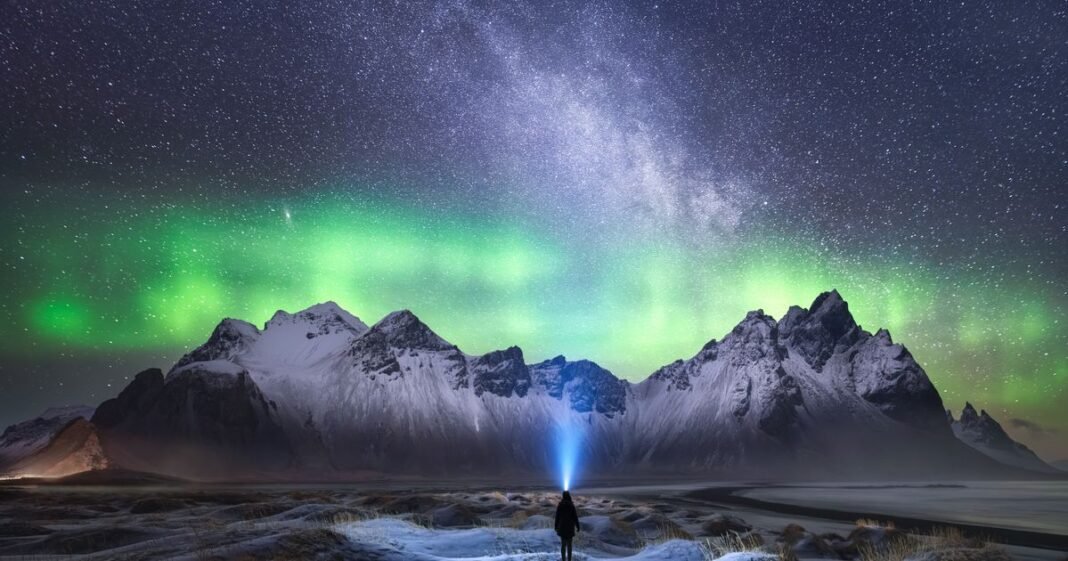If you’ve always harbored a desire to witness the breathtaking Northern Lights phenomenon, this upcoming winter season presents an ideal opportunity to fulfill that dream. January and February of 2026 are anticipated to offer unparalleled Aurora viewing experiences, marking the peak of a rare event known as the solar maximum. During this period, heightened solar magnetic activity will release charged particles that interact with the Earth’s atmosphere, resulting in more vivid and frequent auroras. Scientists predict this peak to last until March 2026 before subsiding until the mid-2030s.
Fortunately, you won’t have to venture deep into the Arctic to catch a glimpse of the lights. Various European destinations such as Iceland, Norway, Sweden, and Finland, situated close to the Arctic Circle, provide excellent viewing opportunities. Travel experts at Travel Republic recommend locations like Iceland, Sweden, and Finland, which boast over 200 nights of Northern Lights activity annually, increasing your chances of witnessing this natural spectacle. Additionally, Norway, including areas like Tromsø, the Lofoten Islands, Alta, and Svalbard, are highly recommended for Aurora sightings.
For those seeking a more distant adventure, Canada’s northwest territories offer up to 240 nights of Northern Lights displays each year, while Alaska’s Fairbanks boasts an 80% chance of observing the aurora.
Typically, the best time to observe the aurora occurs between October and March, with some destinations offering sightings in February and April, albeit with a lower likelihood of optimal viewing conditions.
If planning a dream Aurora getaway, the experts at Travel Republic have shared valuable tips for arranging the ultimate trip. While international travel is an option, parts of the UK also provide opportunities to witness the Aurora under clear, dark winter skies. Scotland, particularly regions like Caithness, Lewis and Harris, the Moray Coast, the Isle of Skye, and the Cairngorms, offer excellent viewing conditions due to their remote landscapes and minimal light pollution. England, specifically Cumbria and Yorkshire, has also been known for Northern Lights sightings.
Recently, the Met Office reported that the Aurora Borealis could be visible across certain parts of the UK due to enhanced geomagnetic activity, potentially extending visibility further south than usual.
If you have a holiday experience related to this topic that you’d like to share, feel free to email us at webtravel@reachplc.com.

